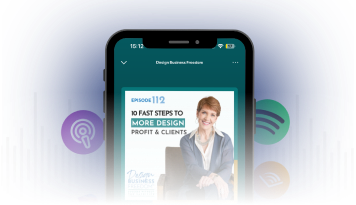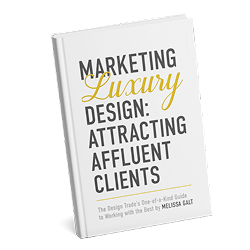Lead Generation to Fill Your Profit Pipeline
Feeling like you’re on a constant roller coaster with your business’s cash flow? It’s time to take control and build a solid pipeline of quality clients who are eager to work with you. In this guide, we’ll explore proven strategies, including effective lead generation for designers, to keep your interior design profit pipeline full and your business thriving.
What is a Profit Pipeline and Why Do You Need One?
Your design profit pipeline ensures that you have a steady flow of clients and projects lined up. This prevents the feast-or-famine cycle that many creatives experience. By consistently building your pipeline through effective lead generation for designers, you eliminate the stress of wondering where your next client will come from, allowing you to focus on delivering exceptional work.
Creating a Paid VIP Wait List
One effective strategy is to create a paid VIP wait list. Instead of turning away clients when you’re fully booked, offer them a spot on your wait list with a non-refundable deposit. This guarantees them a place in your queue and ensures you have a steady stream of projects lined up. The key here is to be specific about start dates and to communicate clearly with your clients, so they know exactly when their project will begin. This approach is another example of effective lead generation for designers that keeps your pipeline full.
Implementing Proven Lead Generation Strategies

To fill your pipeline, you need to use effective lead generation for designers. Here are smart strategies that have worked for many interior designers:
Landscape Signage: Don’t underestimate the power of well-designed landscape signage. Simple, elegant signs in front of your project sites can attract new clients who want the same level of quality in their homes.
Targeted Direct Mail: Send personalized, hand-addressed notes to new homeowners in desirable neighborhoods. Offer a warm welcome and suggest your services in a thoughtful way that resonates with their needs.
Partnerships with Local Businesses: Collaborate with other businesses that serve the same clientele, like high-end gyms, wine shops, or luxury car dealerships. These partnerships can be a goldmine for referrals and are a key component of effective lead generation for designers.
Engage in Strategic Networking: Attend art events, charity galas, and other gatherings where affluent potential clients are likely to be. Building genuine relationships in these settings can lead to long-term business opportunities.
Public Speaking and Workshops: Position yourself as an expert in your field by speaking at home shows, women’s clubs, or other community events. Offering valuable insights and engaging with your audience can attract clients who are ready to invest in your services.
Tracking and Adjusting Your Strategies
To truly succeed with these strategies, it’s important to track your results and adjust as necessary. Give each strategy at least 90 days to start showing results. Be ready to refine your approach based on what’s working and what’s not. Remember, consistency and persistence are key to filling your profit pipeline with effective lead generation for designers.
Key Takeaways
Building a steady profit pipeline is essential for the long-term success of your design business. By implementing these effective lead generation for designers strategies, you can ensure that your business remains profitable and that you’re always working with clients who value your work. So, stop relying on luck and start filling your pipeline with quality leads today.If you’re ready to increase your interior design practice profits, work exclusively with ideal clients, and enjoy the time and resources for your extraordinary life, explore your coaching options. We’ve got your back in the business of interior design.



